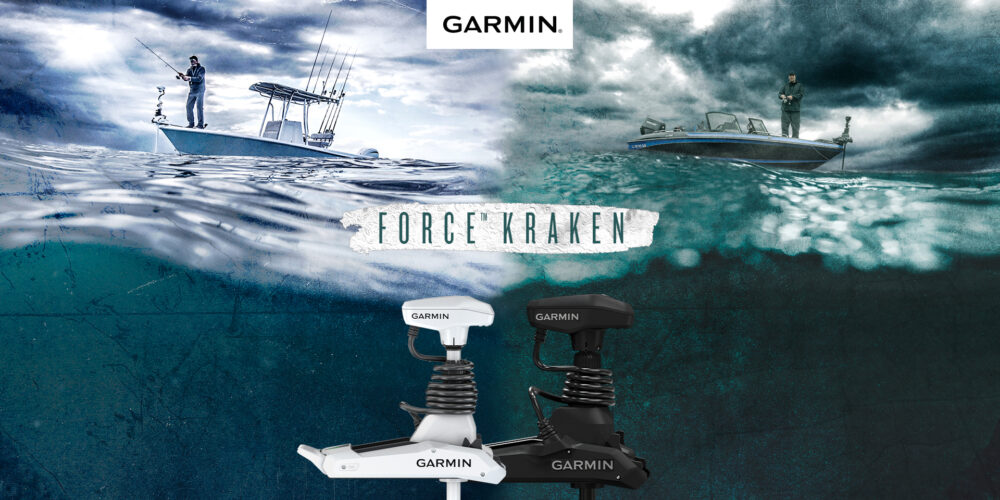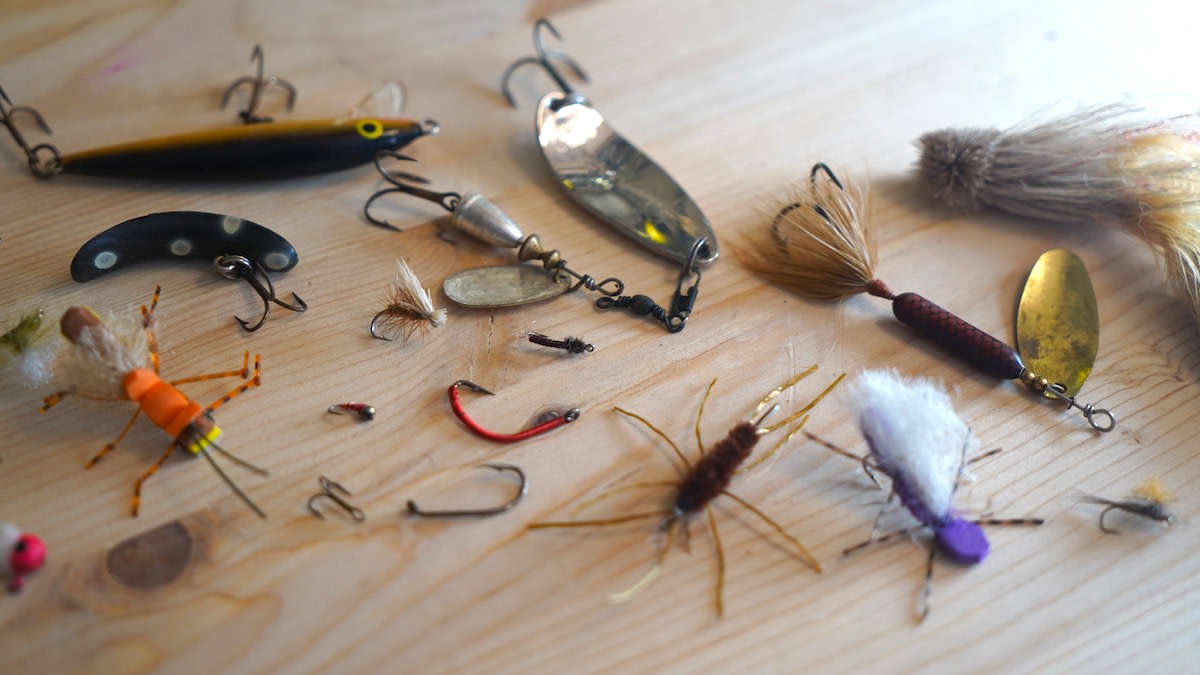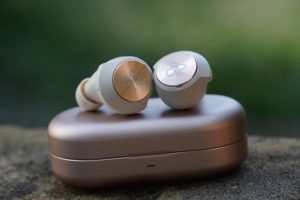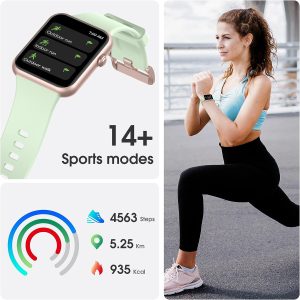Contents
For a small boat trolling setup, you need to focus on a few key components: a durable fishing rod, a quality reel, and a variety of trolling lures or baits suited to your targeted fish species. Additionally, it’s important to consider the type of line, leader material, and appropriate trolling speed for optimal results on the water.
When selecting a fishing rod, look for a lightweight and flexible option that can handle the weight of your lures and the strain of trolling. A reel with a smooth drag system is crucial for reeling in larger fish. Experiment with different lures and baits to find what works best for your specific fishing scenario.
Finally, keep in mind the importance of maintaining a consistent trolling speed to attract fish effectively while trolling.
Understanding The Basics Of Trolling
Discover the essentials of small boat trolling setups to enhance your fishing experience. Learn the ins and outs of this technique for successful trolling on the water.
Trolling is a popular fishing technique used by anglers who are looking to cover a larger expanse of water and increase their chances of catching fish. By towing fishing lines behind a moving boat, anglers can present their baits or lures to fish that may be lurking beneath the surface.
To have a successful trolling experience, it is essential to understand the basics of trolling, including selecting the right gear, choosing the appropriate fishing line, and exploring the different types of trolling lures.
Choosing The Right Trolling Gear:
When it comes to choosing the right trolling gear, there are a few key considerations to keep in mind. Here are the main factors to consider when selecting your trolling setup:
- Rods: Opt for medium to heavy trolling rods that offer flexibility and durability. Look for rods specifically designed for trolling, as they have the necessary strength to handle heavy fish.
- Reels: Choose reels with smooth drag systems and a high line capacity. Trolling puts extra strain on reels, so it’s important to invest in a quality reel that can withstand the pressure.
- Downriggers or Planer Boards: Utilizing downriggers or planer boards can help get your lures to the desired depths and control their positioning. Downriggers allow you to precisely control the depth at which your line is trolling, while planer boards allow for wider coverage.
- Rod Holders: Installing rod holders on your boat is essential for successful trolling. They will secure your rods in place, leaving your hands free to steer the boat and monitor the lines.
Selecting The Appropriate Fishing Line:
Choosing the right fishing line for trolling is crucial, as it affects both the performance and success of your trolling setup. Consider the following when selecting your fishing line:
- Line Strength: Opt for a fishing line with the appropriate breaking strength to handle the target fish species. Heavier lines are suitable for larger fish, while lighter lines are more appropriate for smaller species.
- Line Material: Choose between monofilament, fluorocarbon, or braided lines. Monofilament lines are versatile and cost-effective, fluorocarbon lines are invisible underwater, and braided lines offer superior strength and sensitivity.
- Line Color: Select a fishing line color that matches the water conditions. Clear or low-visibility lines are ideal for clear water, while high-visibility lines are better for murky or stained water.
- Line Length: Determine the desired length of your fishing line based on the depth at which you plan to troll and the type of fish you are targeting. Longer lines allow for trolling at greater depths.
Exploring The Different Types Of Trolling Lures:
When it comes to trolling lures, there are numerous options available. Different lures can imitate various prey species and appeal to different fish. Here are some popular types of trolling lures:
- Crankbaits: These lures come in a range of colors and sizes and are designed to mimic baitfish. They create a swimming action that attracts predatory fish.
- Spoons: Spoon lures are known for their flash and wobbling action. They are typically made of metal and come in a variety of colors and finishes.
- Inline Spinners: These lures feature a spinning blade that creates vibration and flashes in the water, attracting fish. They are effective for targeting species like trout and salmon.
- Soft Plastic Swimbaits: Soft plastic swimbaits imitate a fish’s natural movement and are often used for targeting larger fish like pike and muskie. They can be rigged with weighted hooks to achieve specific depths.
By understanding the basics of trolling, selecting the right gear, choosing the appropriate fishing line, and exploring the different types of trolling lures, you’ll be well-equipped to enjoy a successful and rewarding trolling experience. Remember to always consider the target species, prevailing conditions, and personal preferences when making your choices.
Happy trolling!
Optimizing Your Small Boat For Trolling
Optimize your small boat for trolling with the right setup to enhance your fishing experience. From selecting the right gear to configuring your boat for maximum efficiency, these tips will help you make the most out of your small boat trolling adventures.
Small Boat Trolling Setup:
Trolling is a popular fishing technique, especially when it comes to targeting species like salmon, trout, or walleye. It allows you to cover a large area of water and increase your chances of catching a fish. If you have a small boat, optimizing it for trolling is essential to maximize your fishing success.
In this section, we will discuss three key elements to consider when setting up your small boat for trolling: rod holders, downriggers, and planer boards.
Setting Up Rod Holders For Efficient Trolling
Installing rod holders in strategic locations on your small boat can greatly enhance your trolling experience. Here are a few points to consider when setting up your rod holders:
- Positioning: Place your rod holders where they are easily accessible but out of the way of other gear. Mount them at an angle that provides good visibility and ease of use.
- Adjustability: Opt for rod holders that allow you to adjust the angle and height. This flexibility enables you to adapt to different fishing conditions and preferences.
- Secure Mounting: Ensure your rod holders are securely mounted to prevent them from coming loose during rough waters or when reeling in a big catch.
- Quantity: Consider the number of rod holders you need based on the size of your boat and the number of anglers on board. Having multiple rod holders allows you to fish with multiple lines simultaneously.
Installing Downriggers For Controlled Depth Fishing
Downriggers are a valuable tool for controlled depth fishing, allowing you to precisely target fish at specific depths. Here’s what you need to know when installing downriggers on your small boat:
- Mounting Location: Choose a sturdy and accessible location for mounting your downriggers. The stern or gunwale are common options.
- Cable Management: Properly route and secure the downrigger cable to avoid tangles or any interference with other equipment.
- Weight Selection: Select the appropriate weight for your downrigger setup, considering the desired fishing depth, current, and lure weight.
- Speed Adjustment: Experiment with different trolling speeds to find the optimal speed for attracting fish at your chosen depth.
- Release Mechanism: Ensure your downriggers have reliable release mechanisms that allow you to retrieve your lines easily when a fish strikes.
Utilizing Planer Boards For Wider Coverage
Planer boards are an effective tool for extending your trolling spread and covering a larger area of water. Here’s how you can make the most of planer boards on your small boat:
- Board Selection: Choose planer boards suitable for the size of your boat and fishing conditions. There are various types available, such as inline planers or mast planers, each with unique features and benefits.
- Attachment Considerations: Ensure you have the necessary mounting brackets or releases to attach the planer boards securely to your boat.
- Placement: Position the planer boards out to the sides of your boat at a distance that provides sufficient coverage without tangling lines or interfering with other gear.
- Tension Adjustment: Adjust the tension on the planer board’s line release to achieve the desired spread. A wider spread covers more water, increasing your chances of enticing fish.
- Monitoring: Regularly check your planer boards to make sure they are functioning correctly and not dragging or causing unnecessary drag.
Remember, a well-optimized small boat for trolling can make a significant difference in your fishing success. By setting up rod holders, installing downriggers, and utilizing planer boards correctly, you can enhance your trolling experience and improve your chances of landing that trophy fish.
Get ready to enjoy exciting and fruitful trolling adventures on your small boat!
Techniques For Effective Trolling
Discover effective techniques for setting up a small boat trolling system. Maximize your success on the water with these proven strategies for optimizing your trolling setup. Catch more fish and enhance your fishing experience with these expert tips.
Small Boat Trolling Setup:
Mastering Speed Control To Attract Fish:
- Adjust your trolling speed according to the targeted fish species and prevailing conditions.
- Slow down the speed when targeting fish that prefer a leisurely pace, such as lake trout or walleye.
- Speed up the trolling speed when targeting high-speed predators like salmon or wahoo.
- Vary the speed intermittently to mimic the motion of live bait and attract curious fish.
- Monitor your speed using a GPS or speedometer to maintain consistency and optimize your chances of success.
Implementing Proper Boat Maneuvering:
- Initially, start with a straight-line trolling pattern and gradually incorporate turns to cover a larger area.
- Zigzag trolling patterns can create an enticing movement that attracts predatory fish.
- Make wide turns to prevent lines from crossing and to maintain a proper spread.
- Use sharp turns or figure-eight patterns to trigger strikes from following fish.
- Avoid sudden stops or changes in direction that may cause tangles or disrupt the trolling spread.
Utilizing Flashers And Dodger Spreads For Increased Success:
- Attach flashers or dodgers to your fishing line to create additional attraction and vibration.
- Position flashers closer to the bait for optimal results.
- Experiment with different colors, sizes, and shapes to determine what attracts fish in your local waters.
- Deploy a spread of flashers or dodgers at different depths and distances behind the boat.
- Combine flashers with bait or lures to enhance their effectiveness.
By mastering speed control, implementing proper boat maneuvering techniques, and utilizing flashers and dodger spreads, you can significantly increase your trolling success on smaller boats. Remember to adapt your speed to match the preferences of the targeted fish species and prevailing conditions.
Incorporate turns and zigzag patterns to add allure and cover a larger area. Additionally, attaching flashers or dodgers can provide that extra visual and vibrational appeal that entices fish to strike. So, get out there, experiment, and enjoy the thrill of effective trolling!
Advanced Trolling Strategies
Discover the most effective small boat trolling setup strategies to enhance your fishing experience. With advanced techniques and careful planning, you can maximize your success on the water.
Trolling is a popular fishing technique that involves dragging lures or bait through the water from a moving boat. It’s a versatile method that can be used to target a variety of fish species, and it’s particularly effective for catching game fish like tuna, salmon, and walleye.
In this section, we will dive deeper into advanced trolling strategies to help you maximize your success on the water.
Diving Deeper: Downrigger Tips And Tricks
- Using a downrigger can greatly enhance your trolling setup by allowing you to fish at specific depths. Here are some tips and tricks for using a downrigger effectively:
- Adjust the depth: Experiment with different depths until you find the sweet spot where the fish are biting. Start with your lure or bait set at different depths to see what works best.
- Plan your route: Before you start trolling with a downrigger, plan your route to pass over areas that are likely to hold fish, such as drop-offs, rocky structures, or weed beds.
- Use attractors: Adding a flasher or dodger to your downrigger setup can attract fish from a distance. These devices create flashes of light and vibrations that mimic the movement of prey, making them irresistible to predators.
Fine-Tuning Your Trolling Spreads
- Fine-tuning your trolling spreads involves adjusting the placement of your lures or bait to increase your chances of attracting fish. Consider the following strategies:
- Vary your lure selection: Different fish species have different preferences when it comes to lure types, sizes, and colors. Experiment with a variety of lures to see what works best for the fish you’re targeting.
- Adjust your speed: The speed at which you troll can have a significant impact on your success. Some fish prefer a slow and steady retrieve, while others are more attracted to a fast and erratic movement. Try altering your trolling speed to see what entices the fish.
- Spread out your lines: When trolling with multiple lines, make sure to space them out to cover a wider area. This increases your chances of encountering fish and also reduces the risk of tangles between lines.
Incorporating Natural Baits Into Your Trolling Setup
- Adding natural baits to your trolling setup can be highly effective, as they provide a realistic scent and appearance that fish find irresistible. Here are some ways to incorporate natural baits into your trolling strategy:
- Use live bait: Live bait, such as minnows or worms, can be hooked onto your lure or used on a separate line to entice fish. The natural movement and scent of live bait can be highly effective in attracting predators.
- Try cut bait: Freshly cut chunks of fish, such as herring or smelt, can be used as bait to imitate injured prey. This can trigger a predator’s instinct to strike, resulting in more hook-ups.
- Use scent attractants: Applying scent attractants, such as fish oil or shrimp scent, to your lures or bait can make them more appealing to fish. The scent trail created can help attract fish from a distance and improve your chances of a successful catch.
By implementing these advanced trolling strategies, you can increase your chances of catching more fish on your small boat. Remember to experiment with different techniques and adapt your approach based on the specific conditions and targeted fish species. Happy trolling!
Trolling Safety Measures And Best Practices
Discover essential trolling safety measures and best practices for setting up a small boat trolling system. Enhance your fishing experience with these expert tips and ensure a safe and successful outing on the water.
Understanding Boating Regulations And Safety Guidelines
Boating is a popular pastime that offers relaxation and adventure, but it’s essential to prioritize safety on the water. To ensure a safe and enjoyable trolling experience, it’s crucial to understand boating regulations and safety guidelines. Here are a few key points to keep in mind:
- Familiarize yourself with local boating regulations: Different regions may have specific rules and regulations regarding boating activities. To avoid any potential legal issues, take the time to research and understand the boating regulations in your area.
- Wear personal flotation devices (PFDs): Always have an adequate number of proper-fitting PFDs on board. Ensure that everyone on the boat wears their PFDs at all times, especially when trolling.
- Follow boat capacity limits: Be aware of your boat’s capacity limits and ensure that you don’t exceed them. Overloading a boat can compromise its stability and put everyone on board at risk.
- Maintain a safe distance from other vessels: Keep a safe distance from other boats, especially those engaged in fishing or other water activities. This helps prevent collisions and maintains a respectful environment for all boaters.
- Observe speed limits and no-wake zones: Speed limits and no-wake zones are in place to protect both boaters and the environment. Adhere to these regulations to avoid accidents and minimize damage to sensitive habitats.
Properly Maintaining Trolling Equipment
Maintaining your trolling equipment not only ensures its longevity but also plays a significant role in safety. Here are some best practices for properly maintaining your trolling setup:
- Regularly inspect your equipment: Before each trip, inspect your trolling gear for any signs of wear or damage. Pay close attention to your lines, reels, rods, and connections. Replace any worn or faulty components promptly.
- Clean and lubricate reels: Clean your reels regularly to remove dirt, salt, and debris that can affect their performance. Apply lubricant to keep the reels operating smoothly.
- Check and replace fishing lines: Inspect your fishing lines for abrasions, nicks, or weak spots. Replace any damaged lines to ensure reliable and secure trolling.
- Keep hooks sharp: Dull hooks can result in missed bites or loose fish. Regularly sharpen your hooks to maintain their effectiveness.
- Store equipment properly: After each trip, rinse your trolling gear with fresh water to remove salt and debris. Allow them to dry thoroughly before storing them in a cool, dry place.
Staying Mindful Of Weather Conditions And Hazards
When trolling, it’s critical to stay mindful of weather conditions and potential hazards. Here are some safety measures to consider:
- Check weather forecasts: Before heading out, check the weather forecast for your boating area. Avoid trolling in inclement weather, especially if there are high winds, thunderstorms, or rough waters predicted.
- Be aware of lightning risks: If lightning is present or expected, it’s best to seek shelter immediately. Lightning poses a severe danger to boaters, making it crucial to prioritize safety.
- Stay informed about local hazards: Familiarize yourself with any specific hazards in the waters where you plan to troll. These may include submerged rocks, shallow areas, or strong currents. Use navigational charts and GPS devices to navigate safely.
- Maintain situational awareness: Always remain vigilant while trolling, keeping an eye out for other boats, swimmers, and objects in the water. Being aware of your surroundings is key to avoiding accidents.
By following these trolling safety measures and best practices, you can have a safe and enjoyable experience on the water. Remember, prioritizing safety not only protects you and your passengers but also contributes to the overall enjoyment of boating. Stay informed, maintain your equipment, and always be mindful of the conditions around you.
Happy trolling!

Credit: majorleaguefishing.com
Frequently Asked Questions On Small Boat Trolling Setup
Can You Troll With A Small Boat?
Yes, you can troll with a small boat.
How Far Do You Have To Troll Lures Behind A Boat?
Troll lures should be trailed behind a boat, but the exact distance depends on various factors.
What Is The Best Boat Speed For Trolling?
The ideal boat speed for trolling varies depending on the species of fish you are targeting.
How Do You Keep Lines From Tangling When Trolling?
To prevent line tangling when trolling, follow these tips: 1. Use a swivel: Attach a quality swivel to your line to reduce line twist and tangles. 2. Choose the right line: Opt for a high-quality, low-memory fishing line that is less prone to tangling.
3. Maintain proper tension: Keep a consistent tension on the line while trolling to minimize tangling. 4. Check for obstructions: Spot and remove any potential obstructions or debris that can cause line tangles. Remember, practicing these techniques will help you avoid line tangles when trolling.
Conclusion
To summarize, setting up a small boat trolling rig can greatly enhance your fishing experience. By carefully selecting the right equipment, such as the appropriate rod and reel, using varying lure types, and employing effective trolling techniques, you can increase your chances of success on the water.
Additionally, paying attention to details like line strength and bait depth can further improve your trolling setup. Remember to follow local regulations and consider the specific conditions of the water body you’re fishing in. Whether you’re targeting freshwater or saltwater species, a well-prepared trolling rig can help you hook into more fish and create lasting memories.
So, don’t hesitate to invest time and effort in perfecting your small boat trolling setup – it will surely lead to exciting fishing adventures. Happy fishing!
{ “@context”: “https://schema.org”, “@type”: “FAQPage”, “mainEntity”: [ { “@type”: “Question”, “name”: “Can you troll with a small boat?”, “acceptedAnswer”: { “@type”: “Answer”, “text”: “Yes, you can troll with a small boat.” } } , { “@type”: “Question”, “name”: “How far do you have to troll lures behind a boat?”, “acceptedAnswer”: { “@type”: “Answer”, “text”: “Troll lures should be trailed behind a boat, but the exact distance depends on various factors.” } } , { “@type”: “Question”, “name”: “What is the best boat speed for trolling?”, “acceptedAnswer”: { “@type”: “Answer”, “text”: “The ideal boat speed for trolling varies depending on the species of fish you are targeting.” } } , { “@type”: “Question”, “name”: “How do you keep lines from tangling when trolling?”, “acceptedAnswer”: { “@type”: “Answer”, “text”: “To prevent line tangling when trolling, follow these tips: 1. Use a swivel: Attach a quality swivel to your line to reduce line twist and tangles. 2. Choose the right line: Opt for a high-quality, low-memory fishing line that is less prone to tangling. 3. Maintain proper tension: Keep a consistent tension on the line while trolling to minimize tangling. 4. Check for obstructions: Spot and remove any potential obstructions or debris that can cause line tangles. Remember, practicing these techniques will help you avoid line tangles when trolling.” } } ] }









